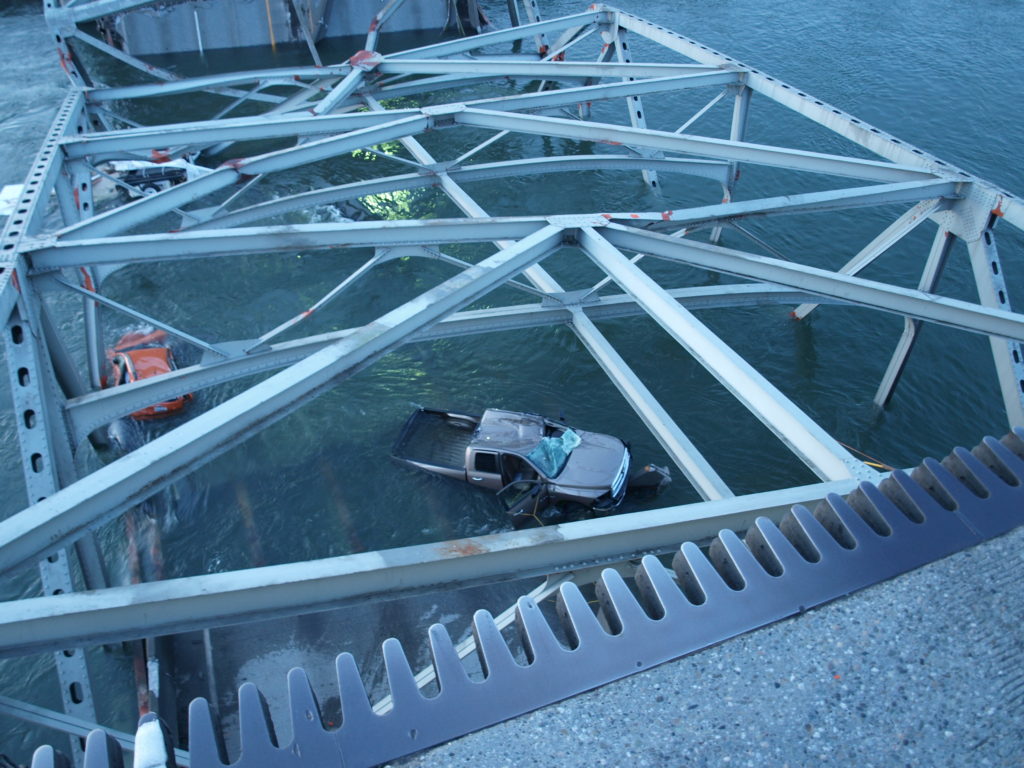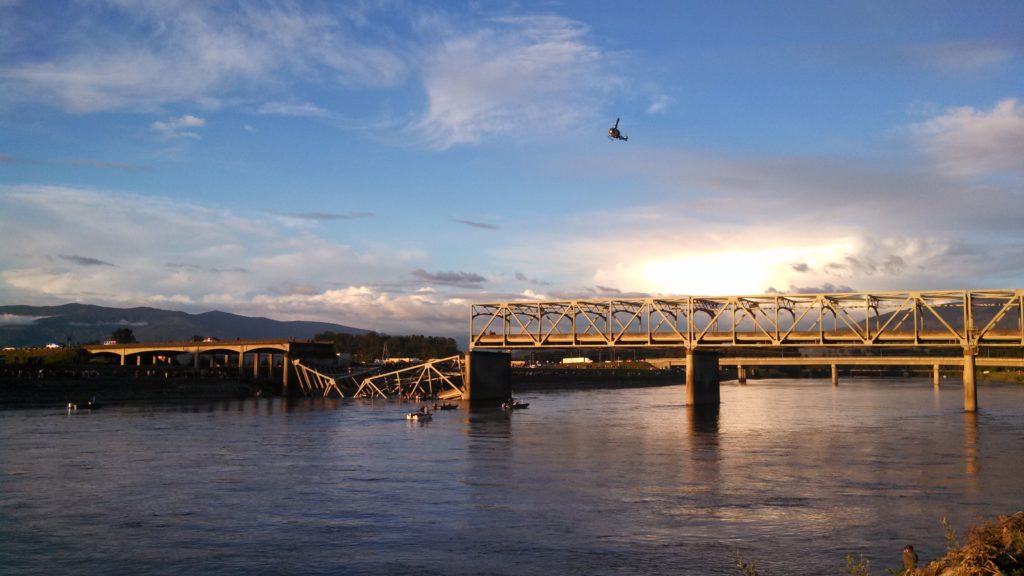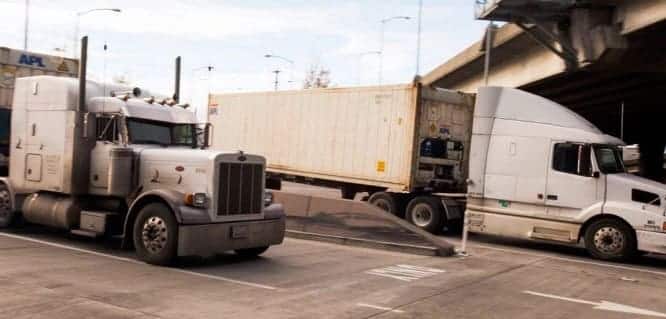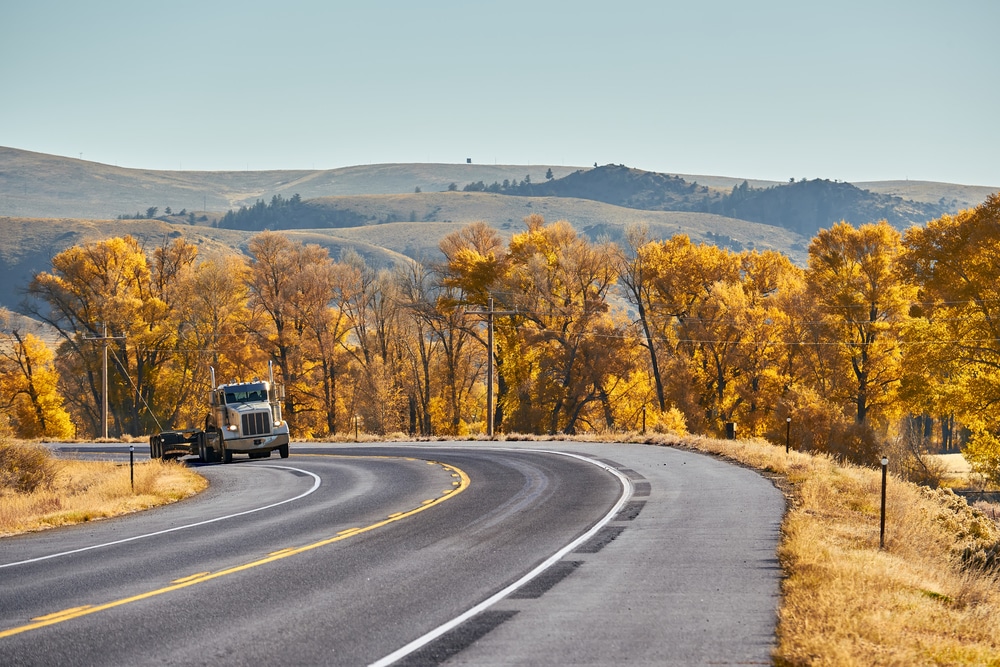Last week, the Washington Supreme Court issued a ruling in the ongoing litigation between the State and trucking companies regarding the collapse of the I-5 Skagit River Bridge in 2013.
Washington Supreme Court tells trucking companies, not WSDOT, to pay for I-5 Skagit bridge collapse
While Judge Steven Gonzalez’ reasoning was not completely sound and seemed to conflict with Washington State’s tort reform law enacted in 1986, the conclusion that the trucking companies responsible for the collapse are 100% responsible for the damages caused is just.
After the bridge collapse, I represented Bryce, who was on his way to play hockey and was crossing the bridge as it collapsed beneath his car.

Bryce struggled to get out of his sinking car and ultimately was able to climb onto its top. He suffered both physical and emotional injuries. Another car carrying a couple also was thrown into the river. Amazingly, no other cars or people were crossing the bridge at the time it collapsed.
How and why the bridge collapsed was investigated in great detail, as you would expect.
During the course of the case, what became clear to me was that the pilot car driver ahead of the oversized load was not properly paying attention to the Skagit bridge’s span’s height as the law requires.
It also became clear to me that the driver of the oversized load and his company had not properly investigated the load’s route and any potential unsafe conditions that would be encountered. The height of the Skagit River Bridge was easily determined before the load was transported.
A safe route could have been planned without Skagit Bridge
The trucking companies, as I understand it, wanted to shift some of the blame for the collapse onto the state because they claimed the bridge was “functionally obsolete.”
In addition, they claimed that the state had failed to install “clearance signs.” I have always pursued claims against the state, when I have determined such a claim was justified. Here, it was my position that the trucking companies causing the collapse should be fully responsible for the damages caused. We did not pursue claims against the state on behalf of my client Bryce.
Of note in the Washington Supreme Court decision is Justice Charlies Wiggins dissent, wherein he cites the 1986 tort-reform law and that under the law, allocation of fault to all parties is to be determined by a jury or judge. I agree with his citation of this law and that in all cases, a percentage responsibility must be allocated to all at-fault parties.
Here, however, based upon my assessment, I believe that Washington State did not do anything wrong that contributed to the collapse. If the truck driver had properly operated his load in the left lane, he would have safely crossed the bridge.
I also believe that his claim that he was “boxed” into the right lane by another semi-truck was without merit. As a truck driver, you are required to be aware of and prepare for any potential hazards.
Here, he could have altered his speed to prevent being “boxed” in. And, he should have been aware of his need to cross the bridge in the left lane long before the approach to the bridge.
All too often, I see truck drivers and trucking companies try to shift the blame for preventable collisions and crashes onto the victims, when accepting full responsibility is required.
– Attorney Kevin Coluccio, Seattle, Washington




